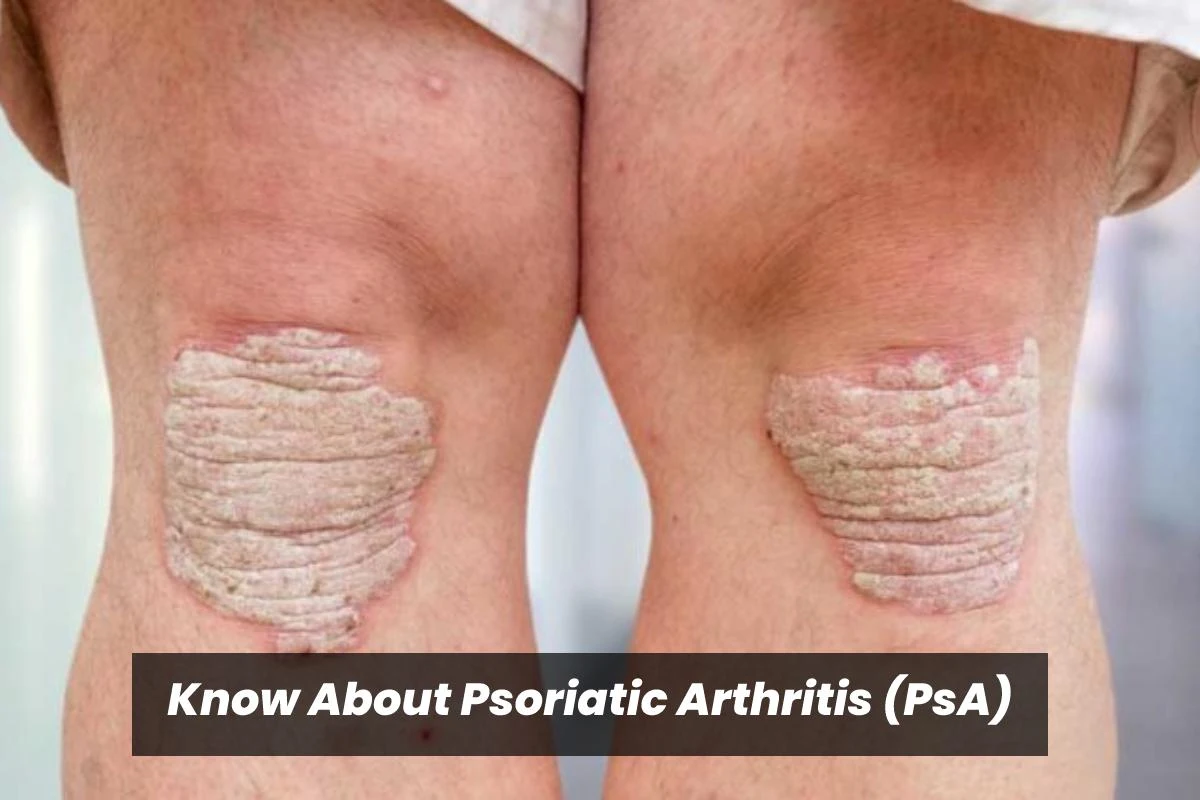Psoriatic arthritis (PsA) – A condition in which swollen and painful joints are associated with arthritis and psoriasis. Psoriasis usually causes itchy, scaly, discoloured patches on the skin and scalp.
About 8 million Americans have psoriasis, and up to 30% develop psoriasis. PSA can be mild or severe and affect one or more joints.
If you or a loved one has been diagnosed with PsA, you may have questions about how to live with the disease.
Also Read: Get A Full Guide On Diet Dr. Pepper Caffeine
Table of Contents
What are the Symptoms of Psoriatic Arthritis (PsA)?
The symptoms of PsA are different for each person. They can range from mild to severe. Sometimes your condition goes into remission, and you feel better for a while. In other cases, your signs may get worse. And also, Your symptoms depend on the type of PSA.
Common Symptoms of PSA Include:
swollen and painful joints on one or both sides of the body
morning stiffness
swollen fingers and toes
sore muscles and tendons
scaly patches on the skin, which may get worse when joint pain flares up
flaky scalp
fatigue
nail pitting
separation of the nail
eye redness
eye pain (uveitis)
Spondyloarthritis PSA, in particular, can also cause the following symptoms:
Spinal pain and stiffness
Pain, swelling and weakness in your:
hips
knees
pegs
feet
elbow
hands
dolls
other joints
swollen fingers or toes
Symmetrical PA affects five or more joints on both sides of the body. Asymmetric PA affects fewer than five joints, but they can be on opposite sides.
Psoriatic arthritis mutilans is a rare method of arthritis that distorts the joints. It can shorten affected fingers and toes. Distal PA causes pain and swelling in the end joints of the fingers and toes.
What Reasons Psoriatic Arthritis (PsA)?
In PsA, your immune system spells your joints and skin. The Doctors don’t know for sure what causes these attacks. They think it comes from a combination of genes and environmental factors.
PSA runs in families. About 40% of people with the disease have one or more family members with PsA. Something in the environment often triggers the disease in people with a tendency to develop PSA. It could be a virus, extreme stress or an injury.
How is Psoriatic Arthritis (PsA) Treated?
PSA treatment aims to recover symptoms, such as rash and joint swelling.
Trusted Source guidelines published in 2018 recommend the “treat the target” approach based on a person’s individual preferences. Although A specific treatment goal and how to measure progress are determined, a doctor works with you to select treatments.
You have many different treatment options. Although, A typical action plan will include one or more of the following:
Nonsteroidal Anti-Inflammatory Drugs (NSAIDs)
These medicines help control joint pain and swelling. Although, Over-the-counter (OTC) options include ibuprofen (Advil) and naproxen (Aleve). If over-the-counter options aren’t effective, your doctor may prescribe NSAIDs in higher doses.
If used incorrectly, NSAIDs can cause:
stomach irritation
stomach bleeding
heart attack
race
liver and kidney damage
Disease-Modifying Antirheumatic Drugs (DMARDs)
These drugs reduce inflammation to prevent joint damage and slow the progression of PA. And also, they can be administered by various routes, including orally, by injection or by infusion.
The most commonly prescribed DMARDs include:
methotrexate (Trexall)
leflunomide (Arava)
sulfasalazine (Azulfidine)
Apremilast (Otezla) is a newer DMARD that is taken by mouth. Although, It works by blocking phosphodiesterase 4, an enzyme involved in inflammation.
Side effects of DMARDs include:
Liver damage
bone marrow suppression
lung infections
steroids
PsA, they are usually injected into the affected joints. These drugs can reduce inflammation. Although, Side effects include pain and a slight risk of joint infection.
Immunosuppressants
Medications such as azathioprine (Imuran) and cyclosporine (Gengraf) calm the overactive immune response in PSA, especially for psoriasis symptoms. They are not used as often now that TNF-alpha inhibitors are available. Although they weaken the immune response, immunosuppressants can increase the risk of infections.
Topical Treatments
Creams, gels, lotions, and ointments can relieve an itchy rash. Although, These actions are available over the counter and by prescription.
Options include:
The anthralin
calcitriol or calcipotriene
salicylic acid
Asteroid creams
Tazarotene, which is a vitamin A derivative
Light therapy and other medications for PsA
Also Read: Full Guide On How To Choose The Best Shaving Blade

